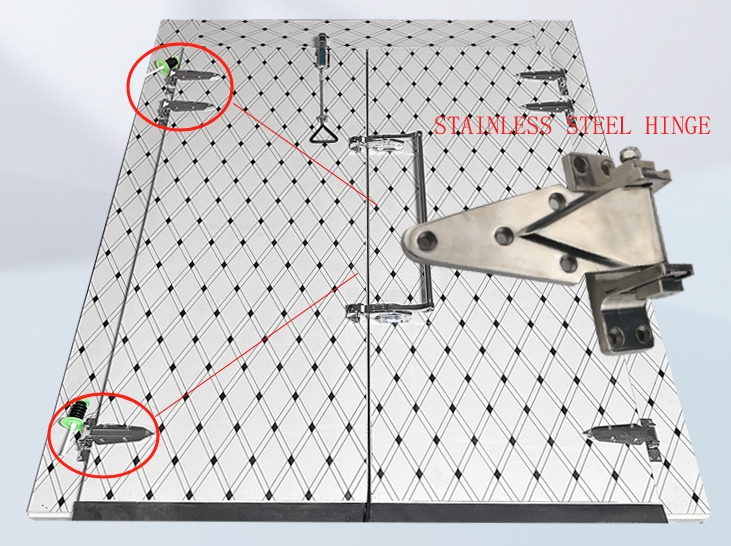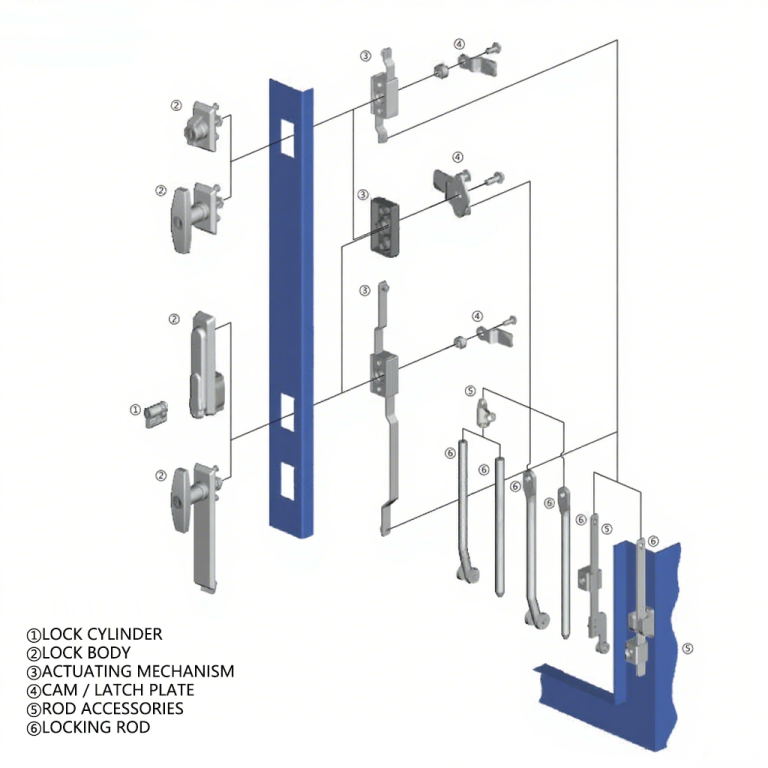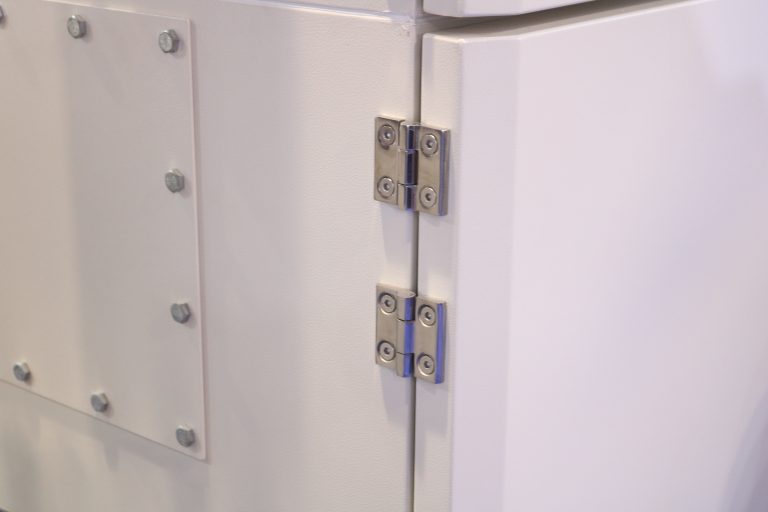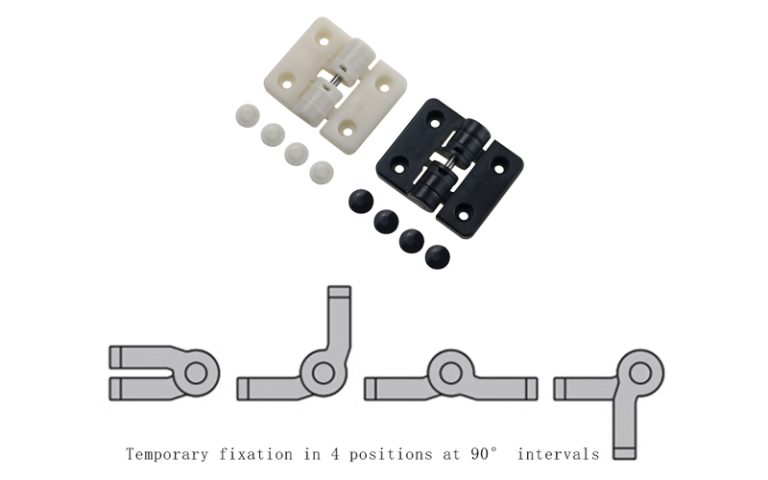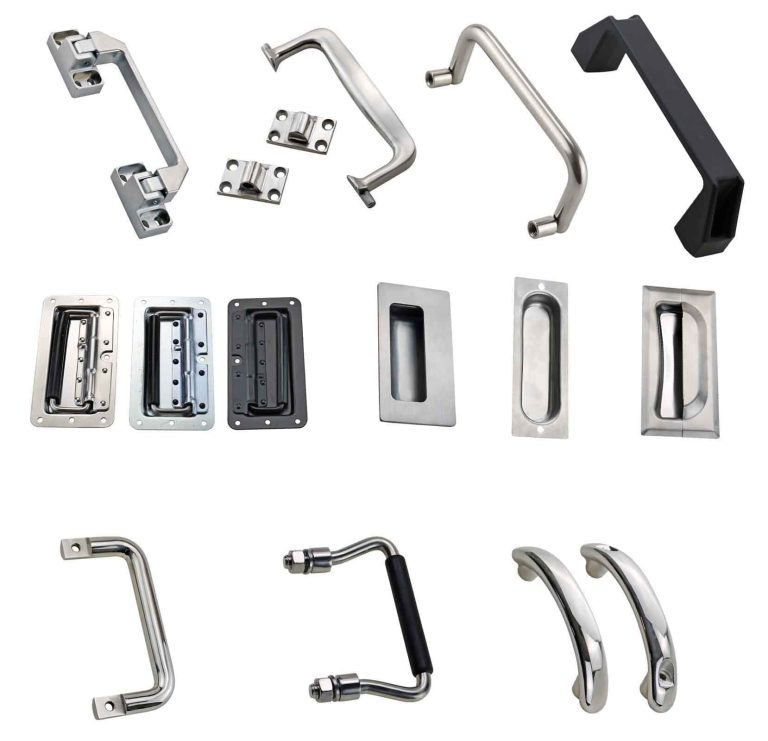HTAN is one of the leading manufacturers of industrial hinges, handles and latches in China.

In the kitchen, medical and industrial fields, the performance of metal handles directly affects the safety and service life of equipment. 304 stainless steel handles have occupied 75% of the global market for medium and high-end handles due to its corrosion resistance, high strength and easy-to-clean characteristics. Its stable physical properties and hygienic advantages, an effective alternative to traditional metal materials, and become the preferred solution in the field of precision manufacturing.
About 304 stainless steel
304 stainless steel belongs to the general-purpose austenitic stainless steel, with corrosion resistance and high temperature stability, widely used in industry, commerce, construction and other industries.
Ratio of major elements (mass percent)
| Element | Content range (mass percent) | Role |
|---|---|---|
| Chromium (Cr) | 18.0% – 20.0% | Formation of a protective layer of chromium oxide, providing corrosion resistance |
| Nickel (Ni) | 8.0% – 10.5% | Stabilizes austenite structure, enhances ductility, high temperature performance and corrosion resistance |
| Carbon (C) | ≤ 0.08% | Low carbon reduces carbide precipitation and improves weldability (304L: ≤ 0.03%; 304H: ≥ 0.04%) |
| Manganese (Mn) | ≤ 2.0% | Improve strength and work hardening ability |
| Silicon (Si) | ≤ 1.0% | Enhance oxidation resistance and high temperature strength |
| Phosphorus (P) | ≤ 0.045% | Impurity elements, need to be strictly controlled to maintain the toughness of materials |
| Sulfur (S) | ≤ 0.030% | Impurity elements, excess will reduce corrosion resistance and processing performance |
| Iron (Fe) | balance | as the base metal, constitute the main body of the alloy |
| Nitrogen (N) | ≤ 0.10% (trace) | may be present in small amounts, not the main added elements |
| Molybdenum (Mo) | Usually not present | Molybdenum-containing version is 316 stainless steel (higher corrosion resistance) |
This ratio allows the material to form a stable austenitic structure with the following distinctive features:
- Non-magnetic characteristics: will not interfere with medical equipment and precision instruments
- Corrosion resistance: 5-8 times higher than ordinary steel
- Mechanical strength: tensile strength reaches more than 520MPa
We commonly see this silver-white metal in food processing equipment, medical equipment, building decoration and other scenes. Especially in occasions that require frequent contact with water vapor and chemical reagents, 304 stainless steel handles can maintain long-term stability.
Analysis of the four core advantages
Super anti-rust ability
Ordinary carbon steel handle in the wet environment in a few weeks that is rust, and 304 stainless steel handle through the 3 nano chromium oxide passivation film to achieve self-repairing protection, scratches can be regenerated after contact with oxygen protective layer. After surface treatment, its salt spray test corrosion resistance up to 200 hours, far more than the industrial standard.
Excellent mechanical properties
Comparative experiments show that:
- Tensile strength: 304 stainless steel (520MPa) vs 201 stainless steel (380MPa)
- Elongation: 304 stainless steel (40%) vs aluminum alloy (15%)
This makes 304 stainless steel handle can withstand heavy loads, but also for complex modeling processing. Through stamping, bending and other processes, you can create an ergonomic shaped handle.
Convenient processing characteristics
The practical application on the production line shows:
- Welding pass rate up to: 99.2
- Surface roughness: Ra0.05μm after polishing.
This feature allows manufacturers to mass produce a variety of surface effects such as mirror, brushed, sandblasted and other handle products.
Health and safety advantages
In the medical field testing, 304 stainless steel handle surface bacterial residue is only 1/20 of plastic products, smooth surface to avoid microbial breeding, wipe with alcohol can be completed disinfection. This is why surgical instruments and pharmaceutical equipment are mandatory to use this type of material.
304 stainless steel handle application scenarios

Kitchen equipment
From household induction cookers to commercial baking equipment, 304 stainless steel handles solve three key problems:
- Resistant to high temperatures from 150°C to 300°C
- Prevent corrosion by dishwasher detergent
- Withstand repeated lifting and pulling of pots and pans

Medical field
Hospital environments have special requirements for materials:
- Withstand high temperature and high pressure sterilization more than 20 times a week
- No reaction with sterilization agents
- No crevices on the surface to hide dirt
Stamped 304 stainless steel handles meet these exacting standards and have a service life of more than 10 years.
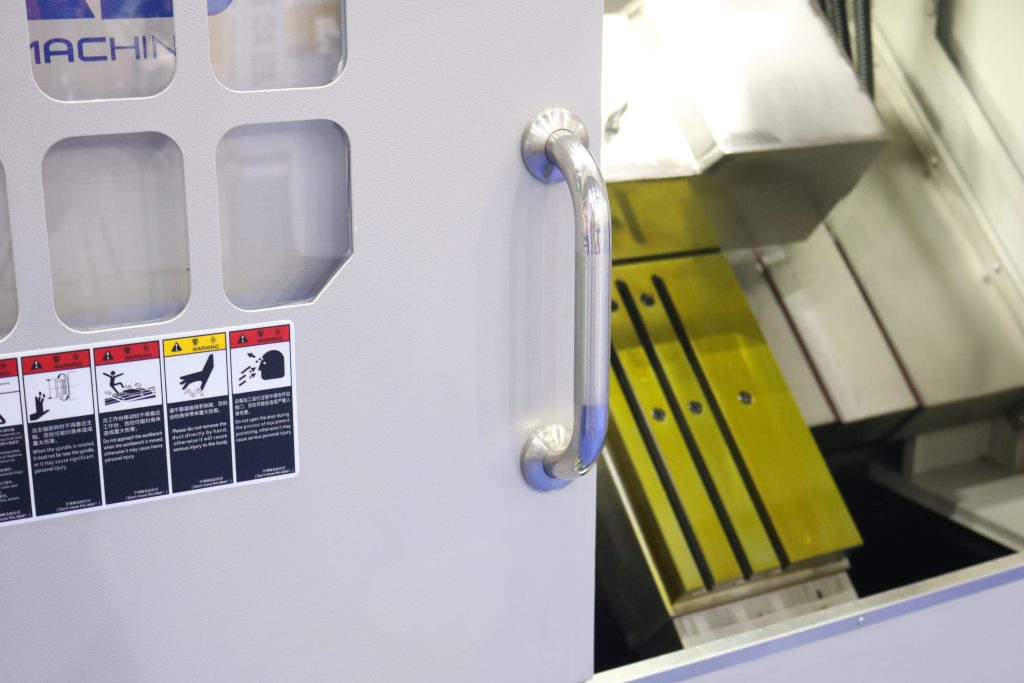
Industrial Manufacturing
In automobile production lines, chemical plants and other places, the equipment handle needs to:
- Withstand engine oil, cutting fluid and other chemicals
- Work properly in temperatures ranging from -20°C to 80°C
- Prevent corrosion by workers’ sweat
Material comparison guide

Comparison with 201 stainless steel
Although the 201 material is 30% cheaper, its corrosion resistance only reaches 40% of 304. Comparative tests in coastal cities show that 201 stainless steel handles show rust spots in 6 months, while 304 products remain intact for 3 years.
The following table shows the chemical composition of grade 201 stainless steel.
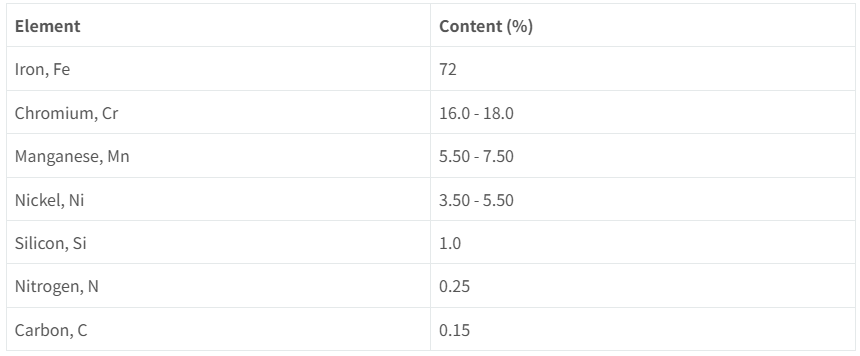
Comparison with 316 Stainless Steel
The 316 model has 2% molybdenum added, making it more suitable for marine environments. However, for most inland application scenarios, 304 stainless steel handles are more cost effective. The price difference between the two is usually more than 50%.

Composition ranges for 316 grade of stainless steels.
| Grade | C | Mn | Si | P | S | Cr | Mo | Ni | N | |
|---|---|---|---|---|---|---|---|---|---|---|
| 316 | Min | – | – | – | 0 | – | 16.0 | 2.00 | 10.0 | – |
| Max | 0.08 | 2.0 | 0.75 | 0.045 | 0.03 | 18.0 | 3.00 | 14.0 | 0.10 | |
| 316L | Min | – | – | – | – | – | 16.0 | 2.00 | 10.0 | – |
| Max | 0.03 | 2.0 | 0.75 | 0.045 | 0.03 | 18.0 | 3.00 | 14.0 | 0.10 | |
| 316H | Min | 0.04 | 0.04 | 0 | – | – | 16.0 | 2.00 | 10.0 | – |
| max | 0.10 | 0.10 | 0.75 | 0.045 | 0.03 | 18.0 | 3.00 | 14.0 | – |
Comparison with Plastic/Aluminum
- Plastic handles will deform above 80°C
- Aluminum alloy is prone to oxidized white spots after long-term use
- Stainless steel is 3-5 times stronger than both.
Maintenance Recommendations
- Regularly wipe with neutral detergent
- Avoid contact with strong acids and alkalis (e.g. toilet bowl cleaner)
- Check if the mounting screws are loose
- Monthly maintenance is recommended for seaside environments
Special note: Do not use steel wool for cleaning as this will damage the protective oxide layer.
Conclusion
304 stainless steel handle with corrosion resistance, high strength and easy to clean characteristics, widely used in the medical, kitchen and industrial fields, its stability and hygiene advantages far beyond the plastic, aluminum alloy and other materials, cost-effective than other stainless steel, become the first choice for precision manufacturing solutions.


